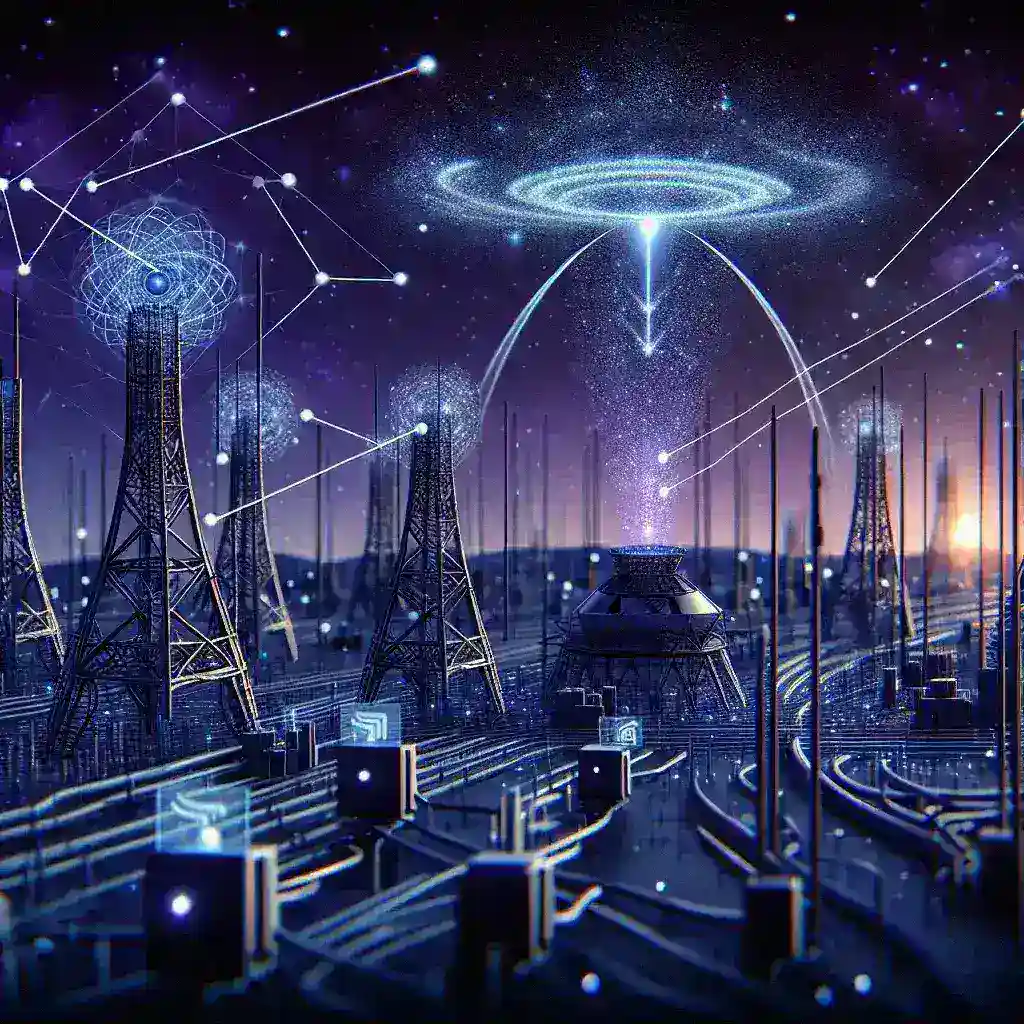As the universe continues to unveil its mysteries, researchers in the field of particle physics are leveraging cutting-edge technologies to enhance their understanding of cosmic phenomena. One of the most promising advancements in recent years is the integration of artificial intelligence (AI) into cosmic ray detection systems. This article delves into how AI-assisted cosmic ray detection is boosting particle physics research, fostering innovation, and leading to groundbreaking discoveries.
Understanding Cosmic Rays
Cosmic rays are high-energy particles originating from outer space, primarily composed of protons, atomic nuclei, and other subatomic particles. They travel at nearly the speed of light and collide with molecules in the Earth’s atmosphere, resulting in secondary particles that can be detected on the ground. Understanding cosmic rays is crucial for various areas of research, including astrophysics, cosmology, and even climate science.
The Role of AI in Cosmic Ray Detection
Traditionally, cosmic ray detection relied on complex hardware setups and extensive manual analysis of data. However, the introduction of AI technologies has transformed the landscape of cosmic ray research. Here are some of the ways AI is enhancing cosmic ray detection:
- Data Processing: AI algorithms can process vast amounts of data generated by cosmic ray detectors far more quickly and accurately than humans. This capability allows researchers to identify patterns and anomalies that may indicate new phenomena.
- Pattern Recognition: Machine learning techniques excel in recognizing patterns in complex datasets. AI models can be trained to differentiate between cosmic rays and background noise, significantly improving detection rates.
- Real-time Analysis: AI systems can perform real-time data analysis, enabling scientists to respond swiftly to new findings and adjust their experiments accordingly.
Historical Context: The Evolution of Cosmic Ray Research
The study of cosmic rays dates back to the early 20th century when physicists like Victor Hess first demonstrated their existence. Over the decades, methods to detect cosmic rays have evolved significantly, from balloon-borne detectors to sophisticated space-based observatories. The latest evolution incorporates AI to further enhance detection capabilities and research outcomes.
Future Predictions: The Next Frontier
Looking ahead, the integration of AI in cosmic ray detection is poised to drive several advancements:
- Enhanced Sensitivity: Future AI models are expected to improve the sensitivity of detection systems, potentially leading to the discovery of new cosmic ray sources.
- Collaborative Networks: AI could facilitate collaboration between multiple detection systems around the world, leading to a more comprehensive understanding of cosmic rays.
- Interdisciplinary Research: AI’s ability to analyze data across various fields may unlock new interdisciplinary research opportunities, bridging gaps between particle physics and other scientific domains.
Pros and Cons of AI in Cosmic Ray Detection
As with any technological advancement, the application of AI in cosmic ray detection comes with its own set of advantages and challenges:
Advantages
- Increased Efficiency: AI streamlines the data analysis process, allowing researchers to focus on interpretation and experimentation.
- Greater Discovery Potential: By identifying subtle signals that may be overlooked by traditional methods, AI can lead to groundbreaking discoveries in particle physics.
- Cost-Effectiveness: Automating data analysis can reduce the need for extensive human resources, making research projects more cost-effective.
Challenges
- Data Quality: The effectiveness of AI models heavily relies on the quality of the input data. Inaccurate or biased data can lead to misleading results.
- Interpretability: AI algorithms, particularly deep learning models, can act as black boxes, making it difficult for researchers to interpret their decisions.
- Technical Expertise: Implementing AI technologies requires a certain level of technical expertise, which may not be readily available in all research teams.
Real-World Examples of AI in Cosmic Ray Research
Several research institutions and collaborations are already harnessing AI for cosmic ray detection:
- The Pierre Auger Observatory: Located in Argentina, this observatory utilizes AI to analyze data from extensive air showers generated by cosmic ray collisions, leading to significant insights into high-energy cosmic events.
- NASA’s High Energy Astrophysics Science Archive Research Center (HEASARC): AI algorithms are employed to sift through large datasets from space observatories, helping to identify cosmic ray sources more effectively.
Conclusion
AI-assisted cosmic ray detection systems represent a significant leap forward in particle physics research. By harnessing the power of AI, researchers can enhance their detection capabilities, streamline data analysis, and ultimately deepening our understanding of the universe. As technology continues to advance, the future of particle physics research looks promising, with AI at the forefront of discovery.

Leave a Reply